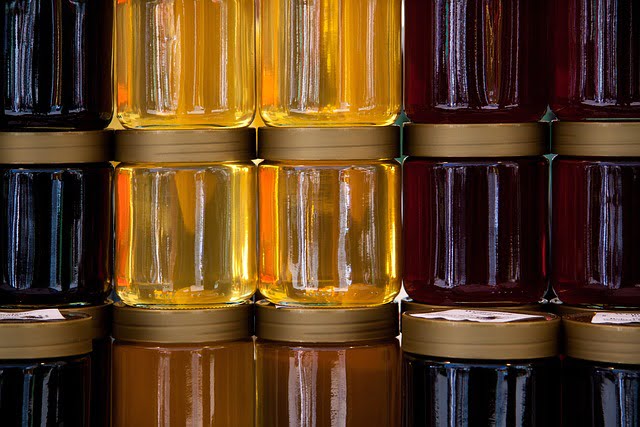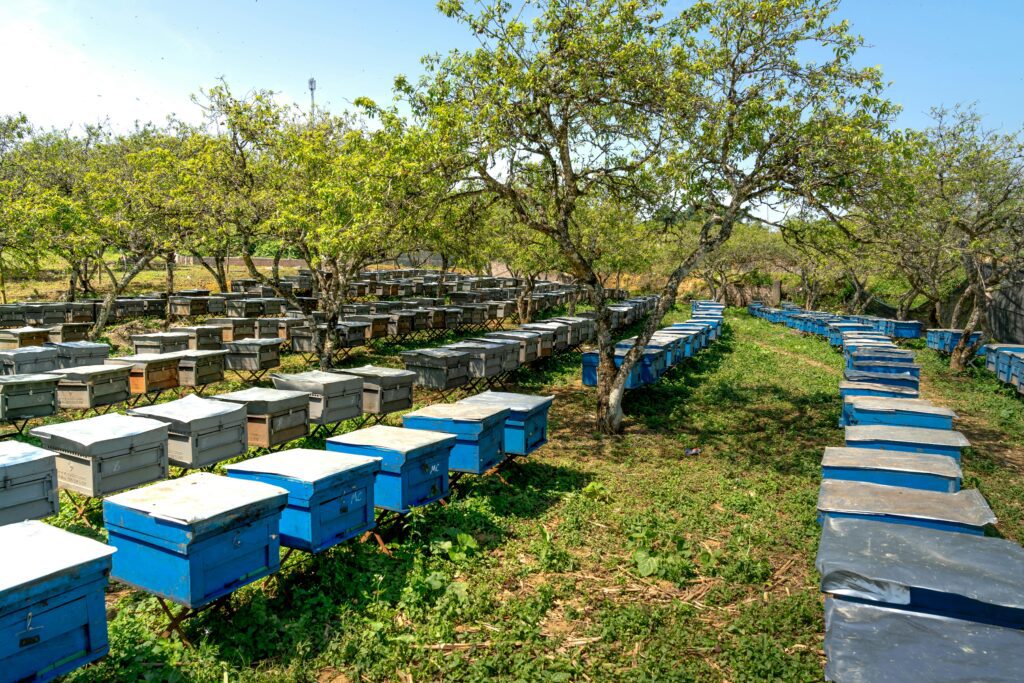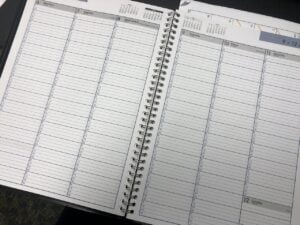In the world of modern honey production, maximizing honey yield is key to a successful apiary. By focusing on high-yield bee species and maintaining optimal hive health, beekeepers can significantly increase their honey output. This comprehensive guide delves into 12 expert methods designed to enhance honey production, from providing adequate nutrition to managing hive conditions effectively. Whether you’re new to beekeeping or looking to refine your strategies, these approaches will help you achieve a thriving, productive apiary.
Table of Contents

1. Optimize Hive Placement
Importance of Location in Honey Production
The location of your hives plays a crucial role in modern honey production. Choose areas with abundant flowering plants, away from pollutants and pesticides. Ensure there is access to fresh water nearby. Optimal hive placement reduces stress on bees, leading to healthier colonies and higher honey yield. Bees require a clean and plentiful water source for hive cooling, brood rearing, and dilution of stored honey.
- Place hives near natural or artificial water sources.
- Avoid placing hives in low-lying areas prone to dampness or flooding.
- Ensure good air circulation to prevent moisture buildup within the hive.
Sunlight and Shelter Considerations
Place hives where they receive morning sunlight, which helps bees warm up and start foraging early. However, provide some afternoon shade to prevent overheating. Shelter from strong winds and heavy rain is also important to maintain hive stability and bee health. Sunlight exposure helps reduce moisture inside the hive and prevents mold and mildew growth.
- Use natural barriers like trees or shrubs for wind protection.
- Position hives facing southeast for optimal sun exposure.
- Elevate hives on stands to prevent water ingress during rains.
2. Select High-Yield Bee Species
Characteristics of Productive Bee Breeds
Different bee species and strains have varying honey production capacities. Research and select breeds known for high honey yield, such as Italian or Carniolan bees. Consider local climate and disease resistance when choosing the best breed for your apiary. Italian bees are renowned for their gentleness and productivity, while Carniolans are known for their rapid spring buildup and ability to forage in cooler temperatures.
- Evaluate the traits of various bee species and strains.
- Consider hybrid bees for specific desirable traits.
- Consult with local beekeepers for recommendations suited to your region.
Examples of High-Yield Bee Species
Italian Bees (Apis mellifera ligustica)
- High-Yield Characteristics:
- Known for their prolific honey production and large brood.
- Gentle temperament, making them easier to manage.
- Strong foraging ability and efficient use of available nectar sources.
- Excellent comb builders, ensuring optimal space for honey storage.
- Good resistance to diseases like foulbrood.
- Challenges:
- Prone to robbing other hives.
- Less suited for colder climates; require more winter stores.
- Tendency to swarm if not properly managed.
Carniolan Bees (Apis mellifera carnica)
- High-Yield Characteristics:
- Rapid spring build-up, allowing for early nectar collection.
- Efficient foragers in cooler and wetter climates.
- Low propensity to swarm compared to other species.
- Gentle and easy to handle, reducing stress during hive inspections.
- Strong resistance to diseases and pests.
- Challenges:
- May have a slower build-up during the late summer and fall.
- Require more space due to rapid brood expansion.
- Can be prone to drifting and robbing if hives are placed too closely.
Buckfast Bees (Apis mellifera buckfast)
Buckfast Bees: 10 Advantages and Disadvantages of Keeping Them
- High-Yield Characteristics:
- Hybrid vigor resulting in robust health and high productivity.
- Good resistance to diseases like Varroa mites and tracheal mites.
- Excellent foraging efficiency and adaptability to various nectar sources.
- Low swarming tendency, making them easier to manage.
- Strong winter survival, reducing losses and ensuring continuity.
- Challenges:
- May exhibit defensive behavior if improperly bred.
- Hybrid characteristics can be inconsistent in subsequent generations.
- Require careful breeding programs to maintain desired traits.
Russian Bees (Apis mellifera)
- High-Yield Characteristics:
- Highly resistant to Varroa mites and tracheal mites.
- Efficient in foraging and honey production, especially in harsh climates.
- Natural inclination for rapid build-up in spring.
- Strong overwintering ability, reducing colony losses.
- Minimal need for chemical treatments due to disease resistance.
- Challenges:
- More defensive than some other species, requiring careful handling.
- Can be slow to build up in early spring compared to other high-yield species.
- Hybridization with other bees can dilute their mite-resistant traits.
Breeding and Genetic Improvement
Engage in selective breeding to enhance traits like honey production, disease resistance, and docility. Partner with local beekeeping associations or research institutions to access superior queen bees and breeding programs. Genetic diversity within your apiary can also enhance colony resilience and productivity.
- Conduct regular assessments of queen performance.
- Replace underperforming queens with high-quality stock.
- Participate in queen rearing programs to maintain genetic vigor.
- Discover 6 Fascinating Ways Queen Bees Impact Hive Behavior
- Successfully Introducing a New Queen – 12 Key Strategies
3. Implement Proper Hive Management Practices
Regular Hive Inspections
12-Month Beekeeping Schedule: Essential Roadmap to Success
Conduct regular hive inspections to monitor bee health, detect diseases, and assess queen performance. Inspections help prevent swarming, ensure proper brood patterns, and identify the need for feeding or pest control. Thorough inspections allow for early detection of issues such as Varroa mites, brood diseases, or queen problems.
- Schedule inspections at least every 10-14 days during active seasons.
- Check for signs of disease, pests, and adequate food stores.
- Observe brood patterns and queen laying performance.
- Locating the Queen Bee – 10 Proven Tips for Beekeepers

Swarm Prevention Techniques
Ultimate Swarm Prevention Guide: 12 Proven Beekeeper Tips
Swarming reduces honey production as it halves the workforce. Use techniques like providing ample space, splitting hives, and managing the queen to prevent swarming. Replace old queens to maintain colony stability and productivity. Swarm control measures include adding extra supers to provide more space and performing splits to manage colony size.
- Monitor hives for signs of swarm preparation, such as queen cells.
- Create nucs or splits from populous hives.
- Use swarm traps to capture swarms that do occur.
4. Provide Adequate Nutrition
Choosing Bee Feeders: 10 Proven Tips and How to Use Them
Importance of Balanced Diet for Bees
A balanced diet is essential for bee health and honey production. Bees require a mix of carbohydrates, primarily from nectar or sugar syrup, and proteins from pollen to thrive. A deficiency in either of these nutrients can lead to weakened colonies, reduced brood rearing, and lower honey yields. Therefore, supplementing natural forage with sugar syrup, pollen patties, or protein supplements during nectar dearth periods is crucial for maintaining colony health and productivity.
- Carbohydrates: Carbohydrates provide the energy needed for daily activities, such as foraging, brood rearing, and maintaining hive temperature. During periods when nectar is scarce, a 1:1 sugar syrup can be fed to bees to ensure they have enough energy.
- Proteins: Proteins are essential for brood development and overall bee health. Pollen is the primary protein source for bees, but during pollen shortages, beekeepers can provide pollen patties or other protein supplements to support colony growth and health.
- Diverse Nutrition: Access to a variety of flowering plants ensures bees get a range of nutrients. Different plants provide different types of nectar and pollen, which can improve bee health and enhance honey quality.
- Supplement During Shortages: Offer protein supplements during pollen shortages to maintain colony strength.
- Use Sugar Syrup: Use a 1:1 sugar syrup for feeding during nectar dearths to support energy needs.
- Promote Floral Diversity: Provide a variety of flowering plants to support diverse nutrition and improve bee health.
Feeding Techniques and Schedules
Implementing effective feeding techniques and schedules based on seasonal forage availability can significantly impact colony health and honey production. Proper feeding helps prevent colony stress and ensures bees have the resources needed for brood rearing and honey storage.
- Feeding Schedules: Start supplemental feeding in early spring to support brood rearing when natural forage is minimal. Continue feeding during late summer and fall if natural forage is scarce, as this period is critical for building up winter stores.
- Types of Feeders: Use different types of feeders based on hive needs and preferences:
- Entrance Feeders: These feeders are placed at the hive entrance and are easy to monitor but may attract robbing bees.
- Division Board Feeders: Placed inside the hive, these feeders reduce the risk of robbing and are protected from the elements.
- Top Feeders: These feeders are placed on top of the hive and can hold large quantities of syrup, reducing the need for frequent refilling.
- Monitoring and Adjustment: Regularly monitor bee consumption to adjust feeding quantities accordingly. Overfeeding can result in bees storing sugar syrup instead of honey, which is not ideal for honey production. Underfeeding, on the other hand, can weaken the colony and reduce its ability to rear brood and produce honey.
- Early Spring Feeding: Start feeding sugar syrup in early spring to stimulate brood rearing and colony growth.
- Late Summer and Fall Feeding: Continue feeding during late summer and fall if natural forage is scarce to ensure colonies have enough stores for winter.
- Monitor Consumption: Keep an eye on how much bees are consuming and adjust feeding rates to avoid overfeeding or underfeeding.
By understanding the importance of a balanced diet and implementing proper feeding techniques and schedules, beekeepers can ensure their colonies remain healthy and productive throughout the year. This not only supports honey production but also enhances the overall resilience and sustainability of the bee farm.
5. Enhance Pollination Sources
Advanced Techniques in Apiculture: 10 Proven Beekeeper Tips

Planting Bee-Friendly Flora
Plant a variety of bee-friendly plants that bloom throughout the year. Consider native plants, wildflowers, and herbs that provide continuous nectar and pollen. Create diverse habitats to support bee foraging and increase honey production. Native plants are often more resilient and require less maintenance, providing sustainable forage for bees.
- Include plants like clover, sunflowers, lavender, and sage.
- Establish flowering hedgerows and meadows.
- Rotate plantings to ensure year-round bloom cycles.
Collaborating with Local Farmers
Partner with local farmers to create pollinator-friendly environments. Encourage planting of cover crops, hedgerows, and buffer zones. Collaborative efforts enhance forage availability and support mutual agricultural benefits. Working with farmers to reduce pesticide use and implement pollinator-friendly practices can significantly boost forage quality and quantity.
- Promote the use of flowering cover crops like buckwheat and phacelia.
- Advocate for integrated pest management (IPM) practices.
- Engage in community initiatives to preserve and expand pollinator habitats.
6. Maintain Hive Health
Disease and Pest Management

Implement integrated pest management (IPM) techniques to control diseases and pests. Regularly monitor for Varroa mites, Nosema, and other common bee ailments. Use organic treatments, like formic acid or essential oils, to minimize chemical exposure. Maintaining strong colonies through proper nutrition and management reduces susceptibility to diseases and pests.
- Conduct regular mite counts using sugar rolls or alcohol washes.
- Rotate treatments to prevent resistance build-up in pests.
- Remove and replace old combs to reduce disease reservoirs.
Hive Hygiene and Sanitation
Practice good hive hygiene by cleaning equipment and removing dead bees and debris. Regularly replace old combs to prevent disease buildup. Sanitize tools and equipment to reduce the risk of disease transmission. Ensuring clean and well-maintained equipment helps prevent the spread of pathogens and pests.
- Clean hive tools and gloves between inspections.
- Remove and discard moldy or contaminated frames.
- Use a blowtorch to sterilize woodenware if necessary.
7. Utilize Modern Beekeeping Technology
Smart Hive Monitoring Systems
Invest in smart hive monitoring systems that track hive conditions, temperature, humidity, and bee activity. These systems provide real-time data and alerts, helping you make informed management decisions and address issues promptly. Remote monitoring can significantly reduce the need for intrusive inspections.
- Install temperature and humidity sensors in hives.
- Use weight sensors to monitor modern honey production.
- Receive alerts for abnormal hive conditions, such as rapid weight loss or temperature spikes.
Automated Honey Extraction
The Perfect Honey Extractor – 8 Expert Tips for Beekeepers
Use automated honey extractors to efficiently harvest honey with minimal disturbance to bees. Modern extractors reduce labor, improve honey quality, and increase production efficiency. Centrifugal extractors are particularly effective at removing honey without damaging combs.
- Choose extractors based on hive size and production scale.
- Ensure extractors are easy to clean and maintain.
- Train staff on proper use to maximize efficiency and safety.
8. Practice Sustainable Beekeeping
Environmental Impact Reduction
Adopt sustainable practices to minimize environmental impact. Avoid using harmful chemicals and pesticides. Promote biodiversity and conservation efforts in your apiary and surrounding areas. Sustainable practices not only protect the environment but also support long-term hive health and productivity.
- Implement organic beekeeping methods where feasible.
- Support conservation programs and habitat restoration projects.
- Educate your community on the importance of pollinators and sustainable practices.
Ethical Treatment of Bees
Ensure ethical treatment of bees by providing proper care, avoiding over-exploitation, and respecting their natural behaviors. Promote bee welfare through responsible beekeeping practices and education. Ethical beekeeping practices foster public trust and support the overall health of bee populations.
- Avoid excessive harvesting that stresses colonies.
- Provide adequate winter stores to ensure survival.
- Educate new beekeepers on ethical and sustainable practices.
9. Expand Your Apiary
Adding New Hives
Gradually expand your apiary by adding new hives. Ensure you have the resources and knowledge to manage additional colonies effectively. Expanding your apiary increases modern honey production and provides opportunities for breeding and genetic improvement. Plan expansions based on your capacity to maintain hive health and productivity.
- Add new hives in small increments to manage growth.
- Balance new hive additions with your ability to provide care and resources.
- Monitor new hives closely to ensure successful establishment.
Scaling Up Operations
Consider scaling up operations by investing in additional equipment, hiring staff, or partnering with other beekeepers. Scaling up requires careful planning and management to maintain hive health and productivity. Successful scaling involves optimizing processes and leveraging economies of scale.
- Invest in high-quality beekeeping equipment to support larger operations.
- Develop training programs for staff to ensure consistent management practices.
- Explore partnerships or cooperatives to share resources and expertise.
- Your Own Honey Farm in 8 Proven Steps
10. Optimize Harvesting Techniques
Timing the Honey Harvest
Harvest honey at the right time to maximize yield and quality. Wait until at least 80% of the honeycomb cells are capped. Proper timing ensures mature honey with optimal moisture content, reducing the risk of fermentation. Harvesting too early can result in high-moisture honey that ferments, while late harvesting can lead to crystallization or loss to robbing.
- Monitor hive conditions and forage availability to determine the optimal harvest period.
- Use a refractometer to measure honey moisture content.
- Ensure honey supers are removed promptly and stored in a dry, cool place.
Safe and Efficient Harvesting Methods
Use safe and efficient methods to harvest honey, minimizing disturbance to bees. Employ techniques like using a bee escape board or blower to remove bees from supers. Handle frames gently to avoid damaging combs. Efficient harvesting methods reduce bee stress and prevent loss of bees or brood.
- Use bee escape boards overnight to clear bees from honey supers.
- Employ blowers or brushes to gently remove remaining bees.
- Extract honey in a clean, sanitary environment to maintain quality.
11. Market Your Honey Effectively
Branding and Packaging
Develop a strong brand identity for your honey products. Use attractive packaging that highlights the unique qualities of your honey. Consider eco-friendly packaging options to appeal to environmentally conscious consumers. Effective branding and packaging can differentiate your product in a competitive market.
- Design labels that emphasize purity, origin, and unique flavors.
- Invest in high-quality packaging materials that preserve honey freshness.
- Highlight certifications or awards on packaging to build credibility.
Selling Through Multiple Channels
Explore various sales channels, such as farmers’ markets, online stores, and local retailers. Participate in community events and fairs to promote your honey. Building a diverse customer base enhances market reach and sales. Leveraging multiple sales channels can mitigate risks and increase revenue opportunities.
- Create an online presence with a user-friendly website and social media profiles.
- Network with local businesses and food co-ops to establish retail partnerships.
- Offer tastings and educational sessions at markets and events to engage customers.
12. Educate Yourself and Stay Updated
Continuous Learning and Training
Stay updated with the latest research, trends, and techniques in beekeeping. Attend workshops, seminars, and conferences. Join beekeeping associations and online forums to exchange knowledge and experiences with fellow beekeepers. Continuous learning helps you adapt to new challenges and improve your beekeeping practices.
- Subscribe to beekeeping journals and newsletters.
- Participate in online courses and webinars.
- Network with experienced beekeepers to gain insights and mentorship.
Adapting to Changing Conditions
Adapt to changing environmental and market conditions by being flexible and open to innovation. Experiment with new methods and technologies to improve modern honey production and stay competitive in the honey market. Proactive adaptation ensures resilience and long-term success.
- Monitor environmental changes and their impact on forage availability.
- Stay informed about regulatory changes affecting beekeeping practices.
- Innovate with new hive designs, treatments, and management techniques.
Additional Resources
USDA PROGRAMS AND RESOURCES TO SUPPORT BEEKEEPERS
Conclusion
Optimizing modern honey production in beekeeping involves a combination of understanding high-yield bee species and implementing effective hive management practices. By ensuring balanced nutrition, managing hive health meticulously, and adopting proven techniques, beekeepers can significantly enhance their apiary’s output. Embracing these expert strategies not only boosts honey yields but also supports the overall health and productivity of your hives, ensuring a prosperous and sustainable beekeeping venture.



